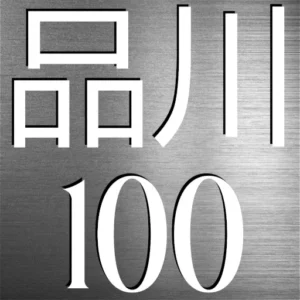What is it?
Myorenji Temple of the sect Kempon Hokke-shū (顕本法華宗) , a branch of Nichiren Buddhism. And the grave of a long serving, blind politician who was born nearby.
Myorenji Temple – 妙蓮寺
Nisshun Shonin (日遵上人), who was the 11th chief priest of Myomanji Temple (妙満寺), the head temple of the Honmon Hokke Sect in Kyoto, founded Myorenji Temple in the first year of the Chōkyō era (長享元年), which corresponds to 1487. Myorenji is known for producing high-ranking monks within the Nichiren sect of Buddhism and is a significant cultural site within the Shinagawa area.
The main hall was built out of concrete 1960. The old main hall built in the Kansei period (1789-1801) is within.
Tomb of Masatoshi Takagi
Takagi Masatoshi was born in December of Ansei 3 (1855) in Minami-Shinagawa, Ebara District, Musashi Province, to a family that ran a pawnshop.
In 1883, he was elected to the second term of the Tokyo Prefectural Assembly. In 1890, he ran for the first general election and became a member of the Diet at the age of 34. In the third general election of 1892, he lost due to the electoral interference by the first Matsukata cabinet. This was his only defeat before going blind. He was elected 13 times in total, serving 39 years as a member of parliament.
At the age of 40 in 1897, he went blind due to glaucoma. Despite being blind, he actively campaigned across his wide constituency (the 5th district, which included Ebara District, Toyotama, and the Izu Islands). In 1903, he attended the first National Blind People’s Convention.
He died in December 1934 at the age of 78.
He is listed as one of the 100 famous blind people who thrived during the Showa era in the book “A Single Path: Blind People Who Lived Through Showa.”
Also buried in Myorenji
Marubashi Chūya (丸橋忠弥):
He was a rōnin (masterless samurai) from the early Edo period. He is most notably remembered as one of the conspirators in the Keian Uprising (慶安の変, Keian no Hen) in 1651. The uprising aimed to overthrow the Tokugawa shogunate, but the plot was discovered and thwarted.
He opened a dojo for the Hōzōin-ryū spear technique in Ochanomizu, Edo, after receiving help from a friend. Later, he met Yui Shōsetsu, and became his right-hand man in the plot to topple the government. Chūya was responsible for attacking Edo Castle as part of the plan.
Unfortunately for the conspirators, the plot was exposed due to a betrayal, and Chūya was captured. Known for his skill with the spear, it was anticipated that he would resist arrest using his weapon. To prevent this, the authorities set off bamboo explosions outside his home to lure him out unarmed, leading to his capture.
Marubashi Chūya was executed by crucifixion at Suzugamori execution grounds along with his mother and brother. The following morning, his head was found at the bedside of the chief priest of Myorenji Temple, and it was buried in a corner of the temple’s cemetery. Chūya’s grave is also located at Kinjoin Temple in Takadanobaba, Toshima Ward
His life and role in the Keian Uprising have been depicted in various cultural works, including kabuki plays and films, highlighting his enduring legacy in Japanese history.
Usugumo Tayū (薄雲太夫):
She was a high-ranking courtesan from the Edo period, known for her connection to the “Maneki-neko1” or the beckoning cat figurine. She was a celebrated figure in the Yoshiwara red-light district and left a lasting cultural impact through her story and the legacy of the Maneki-neko.
- Maneki-neko (招き猫), also known as the “beckoning cat”, is a common Japanese figurine believed to bring good luck to its owner. These figurines are usually made of ceramic or plastic and depict a cat, traditionally a calico Japanese Bobtail, with a paw raised in a beckoning gesture.
Usugumo Tayū kept a beloved three-colored cat named 玉 (Tama) by her side. Legend has it that Tama saved Usugumo Tayū from a snake bite. (She had a beloved cat named Tama, but one day, when the courtesan tried to enter the toilet, the cat bit the hem of her kimono and would not let go. Jiroemon, the owner of the brothel, rushed to the scene and cut off the cat’s head, which then flew into the toilet’s tank and killed a large snake hiding there!) After her death, Tama became the model for the maneki-neko, and a statue of her was enshrined at the 西方寺 (Saihō-ji) temple ↩︎
🙏 Temple Notes
- Sect: Kempon Hokke-shū (Nichiren Buddhism)
- Principal Deity: Nichiren
- Founded: 1487 by Nisshun Shōnin
- Major Features: Enclosed Kansei-era main hall, grave of Takagi, courtesan tombs
- Cultural Role: Center for Nichiren studies; burial site of historical figures
🧭 Visitor Information
Address: 2-1-20 Minamishinagawa, Shinagawa City, Tokyo 140-0004, Japan
Best season: Spring for flowers, Autumn for history walks
Admission: Free
Official Info: None
Where is it?
| what3words | ///grew.products.ages |
| latitude longitude | 35.6151493 139.7365641 |
| Nearest station(s) | Shimbamba (Keikyū Line) |
| Nearest public conveniences | East of the main entrance on Minamibanba St. Or at Shimbamba Station. |
Show me a sign.

Nice
Withervee says…
Few places in Shinagawa tie politics, rebellion, and courtesan folklore into one tranquil setting. Myorenji is worth the detour, if only to admire the resilience of those buried here—and maybe whisper thanks to the cat who saved her mistress.
Site Character
- Lifestyle 生活 (Seikatsu): ❌
- Historical Significance 歴史 (Rekishi): ✔️
- Atmosphere/Natural Features 風土 (Fūdo): ✔️
Who in their right mind would vote for this?
- Local Nichiren Buddhists
- Political historians
- Folklore fans
- Courtesan culture buffs
- Cat lovers

